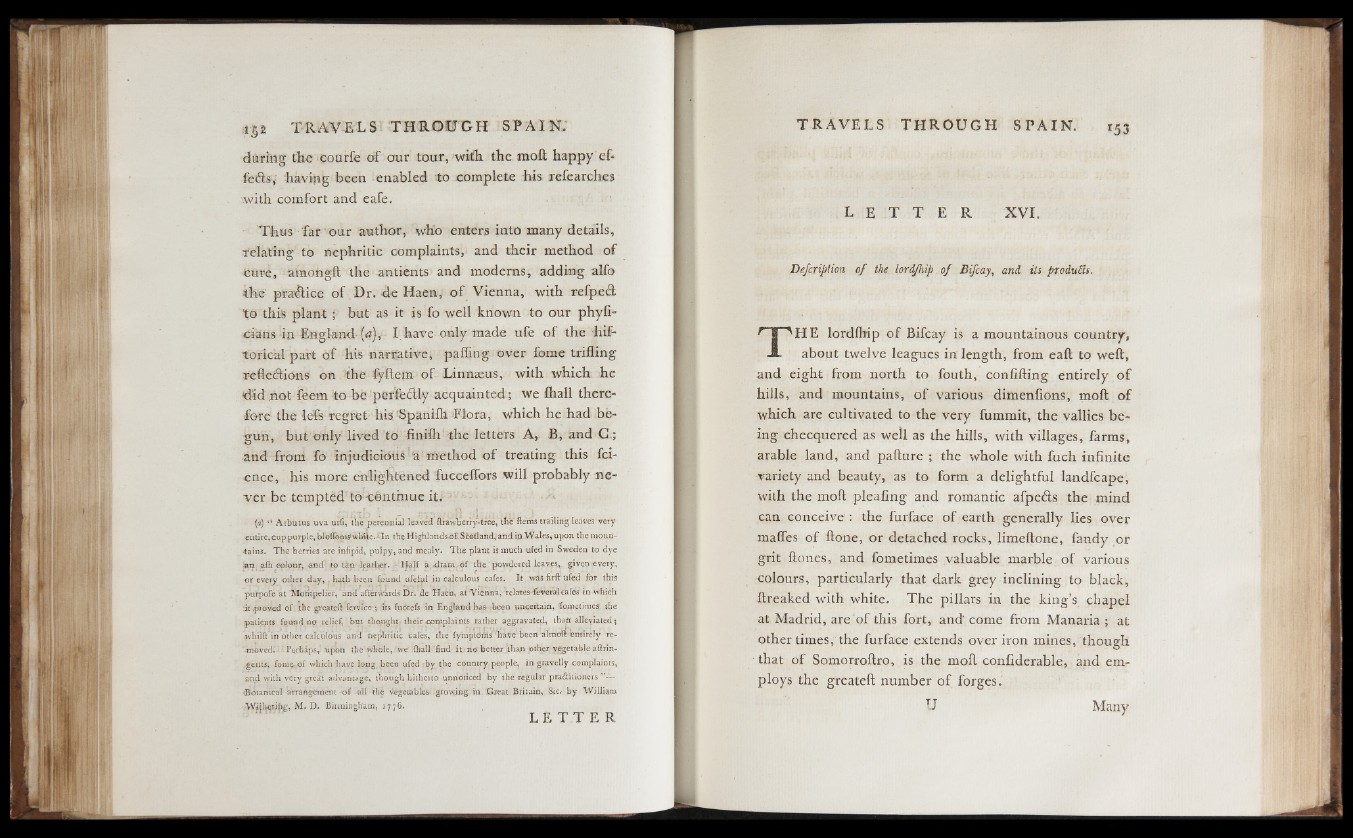
during the co urie of our tour, -with the moil happy effects,
-having been enabled to complete his ¡refearches
with comfort and eafe.
Thus far our author, who enters into many details,
■relating to nephritic complaints, and their method of
Cure, amongft the antients and moderns, adding alfo
che praàice of Dr. de Haen, o f Vienna, with refpeft
to this plant fj but as it is fo well known to our phyfi-
cians in England («), I have only made ufe of the hif-
torioal part of his narrative, palling over fbme trilling
reflections on the fyftem o f Linnaeus, with which he
did not feern to be perfectly acquainted; we fhall therefore
the lefe regret his 'Spanifh Flora, which he had begun,
but only lived to fiuiili the letters A, fi, and C.;
and from fo injudicious a method o f treating this fci-
•ence, his more enlightened fuccelfors will probably never
be temptèd to Cèntmue it;
“ Arbutus uva urfi, the perennial leaved ftrawlrérìy-tfee, tne Hems trailing leaves very
entire, cup purple, bloiTòmsi white. ¿In the Highlands-nkScoiland, anditi Wales* upon the mountains.
The berries are infipid, pulpy, and mealy. The plant is much ufed in Sweden to dye
:an aih colour, -and ,to tan leather. |j H-alf a .dram ^©f the powdered leaves,, given revery,
or every other day, . hath been found ufehil in calculous cafes. It was firibtifed for this
purpofe at 'Montpelier, and aftenVirds Dr. ,de 'Hath, at'Vienna, relates federal ehfés-in Avhiéh
:it proved of the greateft feWicej;- :&s fuccefs in; England has -been uncertain, ifometimesi the
patients found no relief but thought; their .complaints father aggravated, thatt alleviated;
avhilft in other calculous and nephritic oafes, the fymptOnis ’have been alfndit-entirely removed!
1 ■" Perhaps,' upon the’ whole,fewe‘ fhall find it) no better than other, vegetable aflrin-
.geiits, fome of which have long, .been ufed rby the country, people, in gravelly complaints,
and with very great advantage, though hitherto unnoticed by the regular practitioners ”—
tBótariical arrangement-of -all thè vegetableli- growing, in Xlreat Britain., &c.- by William
Witherihg, M, D. Birmingham, 1776.
L E T T E R
L E T T E R XVI.
Defcriplion o f the lordjhip o f Bifcay, and its produBs.
THE lordlhip of Bifcay is a mountainous country,
about twelve leagues in length, from eaft to weft,
and eight from north to fouth, coniifting entirely o f
hills, and mountains, of various dimeniions, moft of
which are cultivated to the very fummit, the vallies being
checquered as well as the hills, with villages, farms,
arable land, and pafture ; the whole with fuch infinite
variety and beauty, as to form a delightful landfcape,
with the moft pleafing and romantic afpeils the mind
can conceive : the furface o f earth generally lies over
malfes of ftone, or detached rocks, limeftone, fandy or
grit ftones, and fometimes valuable marble o f various
colours, particularly that dark grey inclining to black,
ftreaked with white. The pillars in the king’s chapel
at Madrid, are of this fort, and come from Manaria ; at
other times, the furface extends over iron mines, though
that of Somorroftro, is the moil confiderable, and employs
the greateft number of forges.
U Many